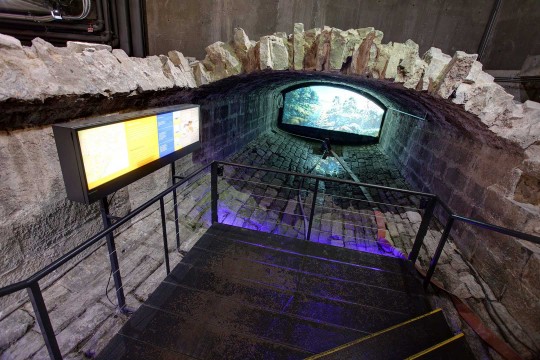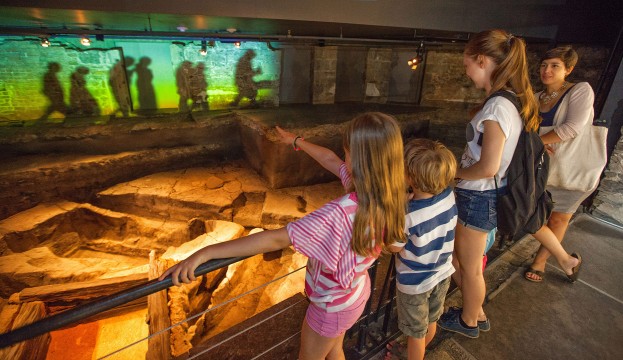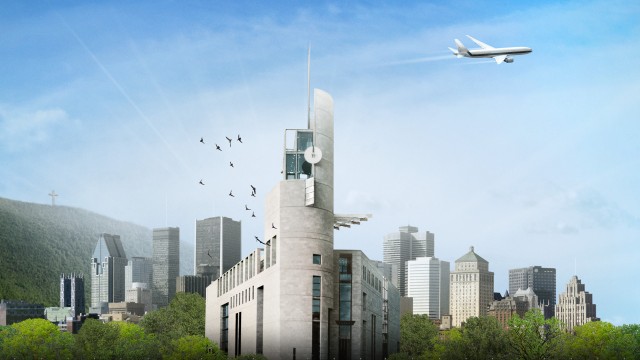Previous exhibition
January 1st, 2010 — December 31st, 2016
Where Montréal Was Born
Where Montréal Was Born is one of the permanent exhibitions and takes visitors to the heart of an authentic archaeological site: the birthplace of Montréal.
The underground route takes place through archaeological vestiges that highlight the various periods of habitation and allow visitors to discover the origins of the city founded in the 17th Century.
The visit begins in the ruins of Ville-Marie’s first Catholic cemetery, dating from 1643, and continues to the foundations of the Royal Insurance Building (1861-1951) and then to the archaeological crypt. These vestiges relate the history of the site beginning with the First Nations people and ending in the 19th Century.
In an area reserved for families, young people will discover the ways of life of the Iroquois of the St. Lawrence River basin through a series of self-directed displays showcasing the lives of Native men, women and children of the time. Visitors can also view the original triangular foundations of the Royal Insurance Building that inspired architect Dan S. Hanganu to configure the current footprint of the Museum. The tour then continues beyond an impressive stone vaulted tunnel, built in 1832 and 1833, on the bed where the Little River once flowed.
A fresco highlighting the Great Peace Treaty of Montréal signed in 1701 links the Éperon Building and the archaeological crypt where a scale model illustrates the evolution of Montréal’s first urban core. A large interactive mural allows visitors to follow the history of the Port of Montréal in in the 1840s.
Finally, projections of virtual characters simulate a 1750 market scene to recreate and provide a fascinating look into the daily life of the city’s first public square.


This exhibition was produced with the financial support of the Ministère de la Culture et des Communications du Québec and the City of Montréal, under the Agreement on the cultural development of Montréal and of the Montreal Port Authority. The International Historic Heritage Foundation (Canada), the Historica Foundation and the Pointe-à-Callière Foundation have also contributed financially.




